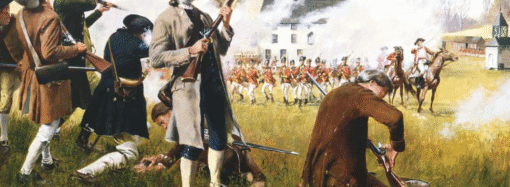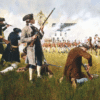Memento mori.
That’s Latin in short form for “Remember, you too shall die.”
Recently I read Erik Larson’s The Splendid And The Vile: A Saga of Churchill, Family, and Defiance During the Blitz, in which he paints in vivid detail the people and the events of that time when Britain stood alone against the might of Nazi Germany. This Battle of Britain, in which German aircraft dropped thousands of tons of bombs and incendiaries on British military bases and cities, left 44,652 dead – 5,626 of them children – and wounded an additional 52,370. Day after day, night after night, the Germans pummeled their British adversaries, their bombs striking hotels, shelters, nightclubs, churches, government buildings, and leveling entire blocks of homes and flats.
As reported by Larson, in the midst of this inferno young women like Mary Churchill – the 18-year-old daughter of Clementine and Winston – and her sister-in-law Pamela – married to the Churchills’ only son Randolph – spent many evenings at clubs and cafes, often dancing from dusk until the early morning while bombs rained down around them. They savored life in the midst of death.
Now let’s fast-forward three decades to the late 1960s. The Vietnam War was raging, there were huge protests of various kinds, political rallies and conventions were in full swing, hippies swarmed into San Francisco, and 1969 was the year of Woodstock. In the summer of ’68, my neighborhood pool was crowded with swimmers and sunbathers, the high school football team I joined that fall as a senior finally won a few games, and throughout the year my classmates were busy either taking the SAT and applying to colleges, planning on some sort of vocational training, or preparing to enlist in the military.
Meanwhile, the Hong Kong Flu was sweeping through the country, eventually killing around 100,000 Americans, most of them over the age of 65, at a time when the United States had more than 100 million fewer people than it does today.
To the best of my remembrance, few of us paid attention to that virus. I have no recollection of that pandemic and have remained so oblivious to it that I had to look up the above dates and figures.
Life went on as usual. Schools, churches, and businesses remained open. Neighbors held backyard barbeques, Scout troops continued meeting, we shook hands and shared hugs – yes, I know: The horror! The horror! – and the only people we saw wearing masks were bank robbers in the movies, trick-or-treaters, and Mardi Gras celebrants in the Deep South.
Which raises some questions: What has happened to us? Why are we in such a panic about a virus which for so many people is asymptomatic? What brought on our distress and fear? When we compare ourselves to the British who endured the torments of the Blitz or to the Americans who seemed almost oblivious to the Hong Kong Flu, why are we so terrified of this virus? Is it because we are so afraid of death? Is it fear of the unknown?
I ask these questions sincerely and without rancor, and have no real answers, only conjecture.
Perhaps our 24-hour news cycle has inflamed our apprehensions. Had CNN and other outlets existed in 1940, the British may have lost heart and given up the fight. Had these outlets existed in 1968 – television then brought us the news just two or three times a day – we might have panicked as well.
Maybe it’s the mysterious nature of the virus and all our own misconceptions that have roused our fears to a fever pitch. We still know little about this disease; the statistics we read about the number of those who have fallen ill or died are as jumbled as a box of puzzle pieces. We yearn for facts, but receive mostly models and conjecture. The unknown can be frightening.
Maybe we are just less familiar with death than past generations. As late as 1900, for example, 10 percent of American children died before the age of one. Since then that mortality rate has declined by almost 99 percent. Life expectancy in the last 12 decades has risen dramatically. Our enormous advances in medicine have made us much safer in this pandemic than those poor souls who died from the Spanish Influenza in 1918-1919.
All good news.
But looking back at those questions I raised, I remain puzzled. Were those who endured the Blitz and the pandemic of the late sixties more courageous than us, or more foolish? The English might have saved many lives, at least initially, simply by surrendering to the Nazis. Physicians, scientists, and politicians might have saved lives, at least initially, by shuttering the country in 1968.
But the Brits didn’t surrender, and our politicians and experts didn’t close down America in the late 60s.
Here’s a cold, hard truth known to all of us: One day we are going to quit breathing, close our eyes, and die. Our souls may live on, but we won’t be drinking coffee, listening to bird song and the laughter of children, or getting our fingers dirty in our beloved backyard garden.
If we live in terror of death, can we truly live at all? How do we move forward, how do we love life and those around us, when the last act of our play is already scripted?
We began with a Latin tag; let’s end with one.
Carpe diem.
Seize the day.
To live, to love our family and friends, and to embrace this dented old world is the answer to my last question.
—
Dear Readers,
Big Tech is suppressing our reach, refusing to let us advertise and squelching our ability to serve up a steady diet of truth and ideas. Help us fight back by becoming a member for just $5 a month and then join the discussion on Parler @CharlemagneInstitute and Gab @CharlemagneInstitute!
Image Credit:
Flickr-pingnews.com, public domain
















Leave a Comment
Your email address will not be published. Required fields are marked with *